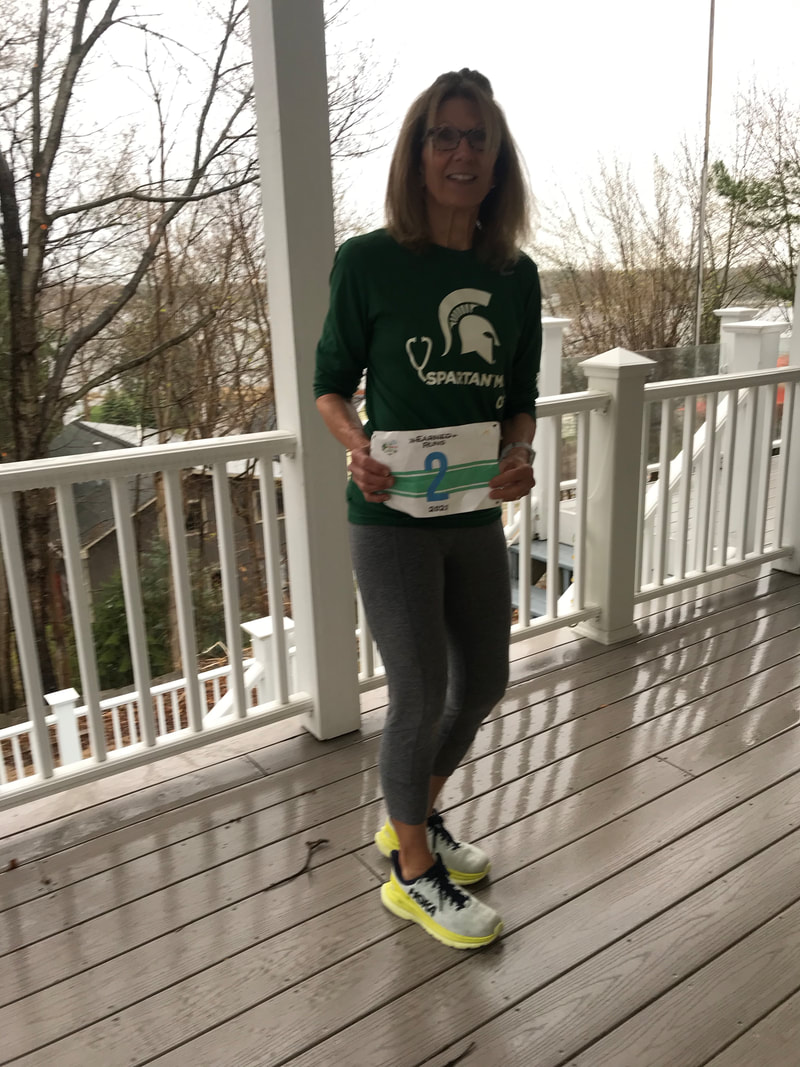BLOG
|
|
KNEE CONDITIONING: AMERICAN ACADEMY ORTHOPEDIC SURGEONS
PROGRESSION TO TRAINING WITH WEIGHTS INCLUDED Have you ever wanted the help of a physical therapist (PT) to design a basic program of exercises that will maintain knee health? If you’re not injured, this can be difficult. A doctor’s prescription is required most often, unless the PT facility is geared towards supporting the training of well athletes. I found a PT center like this several years ago and paid a fixed fee for 2 visits. First, a comprehensive evaluation was performed by the team (2 physical therapists and 2 trainers, each with different areas of expertise). Then, exercises were prescribed and demonstrated. Finally, I learned how to do them with supervision. The follow up was scheduled for a progress check. It changed my approach to running and helped me see myself as an athletic. I learned about warm-ups, stretches, mobility and strengthening. None of the routines involved high impact movement. Many were performed lying down, or started from the plank position or on hands and knees. Some used resistance bands. The balance exercises required standing, mostly on one leg at a time. Attention was paid not just to the lower body, but hips, core, spine, and upper body. It could have been that what I was prescribed were age-appropriate. Perhaps all the exercises were ‘safe’ so that, as an older 50+ athlete, I would not hurt myself at home. But in continuing to research the literature and read about training for running, I realized it was common that some workouts recommended for elites and professionals were low on the side of drama, and high on technique. For running (and possibly other traditional sports) the training has evolved to reserve joint-taxing workouts for those that are designed to specifically improve sport performance. All other workouts take the burden off the bones and joints and work on improving soft tissue (muscles, tendons, ligaments, fascia) function and health. High intensity workout systems often combine aerobic with strength training and involve transitioning quickly through sets of enthusiastic movements. New forms of fitness sport competition have emerged as a result of their immense popularity; the Reebok™ CrossFit Games is an example. Outdoor obstacle course challenges like Spartan, American Ninja Warrior, and Tough Mudder require similar all-around athleticism. It seems that for ALL ATHLETES there are times when simple conditioning exercises might be appropriate and possibly preferred. For recovery after a tough competition, return to training after injury or a long absence, preparation to take on a new sport activity, or as a joint-preserving strategy within an aggressive training plan. Exercises which emphasize maintaining proper form, are low impact and designed to be performed slowly, with positions held for a few counts. And deemed safe by orthopedic surgeons and the physical therapists who help their patients return to full function. Recently I happened upon a set of conditioning programs from the American Academy of Orthopedic Surgeons, last updated in 2012. I was looking for knee exercises I could use in recovery. The knee conditioning program exercises include some I had been given at the training facility and some prescribed at PT for a soft tissue problem (bursitis) about 7 years ago. They are all very safe and rather boring. I can’t imagine them being set to music but possibly binging on shows while doing some of them. There is a progression from warm-up to stretching to strengthening work. The site has other conditioning programs for the spine, hip, shoulder, and foot and ankle. All describe: main muscles worked, equipment needed (not much), repetitions and times per week to be performed, step by step directions, and tips. There are graphics depicting movements. One of the BEST aspects of the equipment/directions is that a PROGRESSION to greater difficulty is explained. In some instances, weights are recommended, providing subtle encouragement to work harder and easy instructions on how to convert bodyweight exercises those that employs weights. Most of these are not complex exercises, only a few muscles are targeted, but they can be useful when incorporated into an overall fitness program. The saying is, “The best diet is one that you stay on”, so it follows that “the best exercise is one that you perform”. Of course, if you are injured, doctor’s orders MUST be obtained and followed with regard to exercise*. The PDFs are now posted on the RESOURCES page. RUN HAPPY! *The AAOS site advises: “After an injury or surgery, an exercise conditioning program will help you return to daily activities and enjoy a more active, healthy lifestyle. Following a well-structured conditioning program will also help you return to sports and other recreational activities. This is a general conditioning program that provides a wide range of exercises. To ensure that the program is safe and effective for you, it should be performed under your doctor’s supervision. Talk to your doctor or physical therapist about which exercises will best help you meet your rehabilitation goal.” http://orthoinfo.org/PDFs/Rehab_Knee_6.pdf (on the RESOURCES page too) http://orthoinfo.org/topic.cfm?topic=A00672 https://games.crossfit.com http://www.ninjawarrior.info
0 Comments
Your comment will be posted after it is approved.
Leave a Reply. |
BRIDGE TO PHYSICAL SELF
Running, walking, and fitness activities enable us to experience our physical selves in a world mostly accessed through use of fingers on a mobile device. AuthorEARNED RUNS is edited and authored by me, runner and founder. In 1978 I began participating in 10K road races before 5Ks were common. I've been a dietitian, practiced and taught clinical pathology, and been involved with research that utilized pathology. I am fascinated with understanding the origins of disease as well as health and longevity. Archives
November 2023
CategoriesNew! Search Box
Earned Runs is now searchable! Check it out...
|


 RSS Feed
RSS Feed